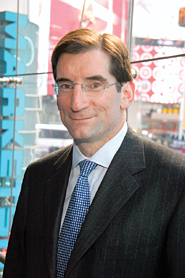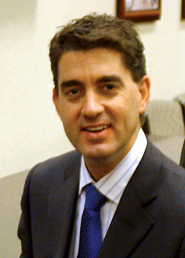Who said the exchange business is a commoditized market? In the past two months, three of the seven exchange operators have rolled out new trading models that break with the ordinary. While most exchanges allocate trades based on price and time, and price their services under the make-take model, these players are toying with the parameters in hopes of winning order flow by changing trader behavior.

Nasdaq Thinks Big
On Oct. 15, Nasdaq OMX Group launched its Nasdaq OMX PSX marketplace using the license it obtained when it bought the Philadelphia Stock Exchange. "PSX" stands for "price-size exchange." Instead of allocating trades based on price and time priority, PSX allocates incoming orders to traders based on how much size they are quoting.
The bigger the quote, the bigger the allotment.
This pro rata allocation model borrows from the options exchanges, which reward market makers with a maximum of 40 percent of any incoming order. As of last week, Nasdaq had garnered a market share of roughly 0.5 percent, a figure Nasdaq chief executive Bob Greifeld said he was proud of.
"PSX is off to a fantastic start," Greifeld recently told analysts. "It’s the most successful launch of an equities exchange ever."
Still, some question whether Nasdaq is meeting its goals. The exchange operator is touting PSX as a way to get large trades done on the public markets, where the average trade size is about 300 shares. The average size of a trade on PSX is only 30 percent greater, according to Nasdaq.
Richard Repetto, an analyst at Sandler O’Neill & Partners, asked Greifeld if he was disappointed with the size of the PSX trades. "It is in the range we expected," Greifeld said, "but we want it to go dramatically higher. People have to have confidence in the model." To make the dream a reality, Nasdaq is working closely with the buyside to make sure they have "true" direct access to the market," Greifeld added.
BATS’ Inversion
Executives at Nasdaq may be pleased with the performance of their new exchange, but they can’t be happy with events over at Nasdaq OMX BX. The "inverted" market’s share of trading hit about 5 percent in early April, but has fallen ever since. It now stands at about 2 percent.
BX is a direct competitor with Direct Edge’s EDGA exchange and will now face off against BYX, the second stock exchange run by BATS Global Markets. All three exchanges operate a similar pricing structure that runs counter to the norm. Rather than pay suppliers of liquidity and charge takers–the maker-taker model–they do the reverse: They pay takers between 1 and 3 cents per 100 shares and charge makers from zero to 3 cents.
The idea behind the pricing twist is to make it attractive to take liquidity, so that liquidity suppliers will want to post on the exchanges. The name to beat is EDGA, which has a 5 percent market share. Given that bogey, BYX is off to a good start. It only fully launched on Oct. 22, but its market share on a day last week approached 1 percent.
BATS is not wedded to its pricing, however. A spokesman told Traders Magazine, "There’s a lot of experimenting going on right now with pricing. We’re going to see how it shakes out, see how people respond to it."
CBSX Chases the Wholesalers
The CBOE Stock Exchange, the industry’s smallest, is inverting its prices as well, but much more aggressively. The CBSX is paying liquidity takers 14 cents per 100 shares and charging liquidity providers 18 cents. The pricing scheme was first rolled out to a couple dozen securities, but on Oct. 18, was expanded to include all names.

Like BYX, EDGA and BX, the CBOE’s stock exchange hopes to attract liquidity providers by enticing liquidity takers. But its much higher take rebate is aimed squarely at wholesalers and their ability to pay for order flow and price-improve incoming orders.
Most retail brokers send their orders to wholesalers, rather than take liquidity on exchanges, because their cost to trade is effectively less. On exchanges, liquidity takers pay the spread plus a fee to trade. They pay the spread when they send their orders to wholesalers too, but they also receive payment for their flow and may see their orders price-improved.
CBSX is betting that by mimicking the pricing advantages of the wholesalers, it will capture a chunk of that retail flow. "The idea is to artificially compress the spread," CBSX chief executive David Harris said. "That way, liquidity providers on the exchange are on equal footing with the wholesalers."
The economics of the scheme work best with low-priced stocks, Harris noted. That’s why CBSX began its new pricing program with 24 of the most actively traded low-priced stocks, such as Citigroup and Bank of America.
Volume data suggest the program has not done much to loosen the grip of the wholesalers as of yet. One day last week, none of the original 24 stocks commanded a market share of more than 1 percent on CBSX. The exchange has an overall market share of about 0.25 percent.



